Since I was a kid, I liked experimenting with different varieties of ZZ plants. I started with a raven ZZ plant and quickly evolved to different ZZ plant types. The gorgeous foliages and easy caring routines made me not settle for a single species.
My favorite ZZ plant varieties are raven, dwarf zenzi, variegate, and dark zamicro. These ZZ plant species offer an expression of strength, beauty, and prosperity. Besides that, they maintain harmony and color contrast.
I wrote this article to share different types of ZZ plants with their respective pictures for easy identification. I have also highlighted quick caring tips for ZZ plants. Take the time to read through and pick a species that suits your preferences.
Different Types of ZZ Plants with Pictures
Zamicolous zamifoliais is the smallest group of houseplants since there are a few gorgeous and exciting varieties for cultivation at home. Each species has a unique caring routine.
Below is a quick list of ZZ plant varieties with their respective pictures. Take the time to read through their characteristics and caring tips.
Raven ZZ Plant
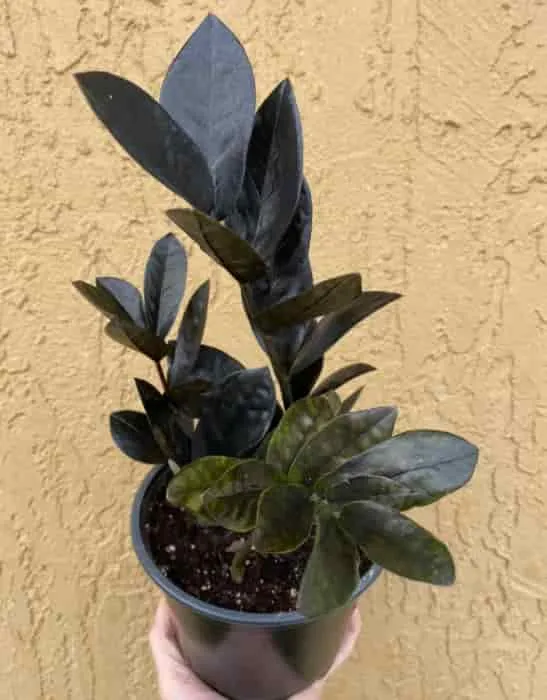
It is the most popular ZZ plant type that resembles the crow. This ZZ plant species is also called a jungle warrior or blackbird.
Raven ZZ plant is a slow-growing species and can reach 30-inches tall. The fleshy and succulent stems with black-colored foliages create a long-lasting impression.
A Juvenile raven plant has a dark green stem and foliages. The color tends to change to black at maturity. The leaves have an oblong shape with 6-8 leaflets.
ZZ Variegata
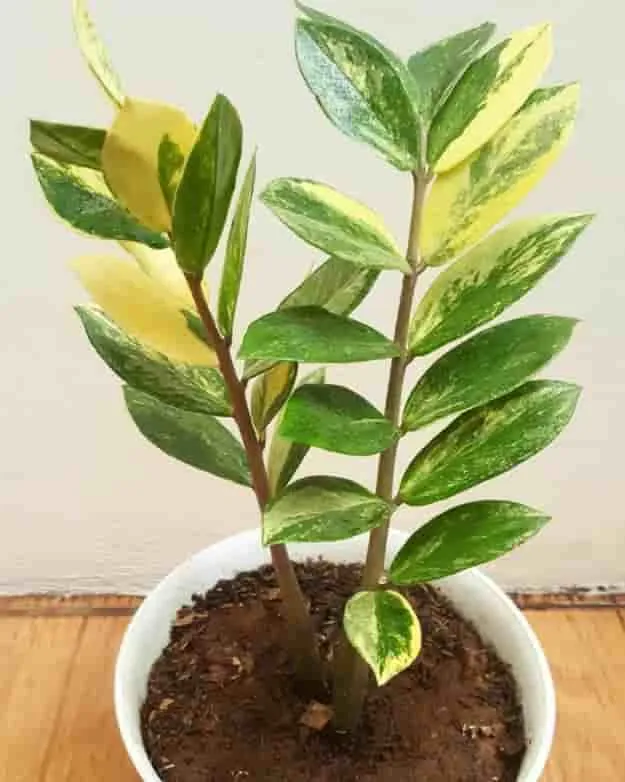
The species has yellow-white variegation on its foliages. The Zamicolous zamiifolia variegata is also called Zamia Albino due to the white-yellow coloration.
The ZZ Variegata has the most demanding caring routines compared to other species. The variety thrives in a spot receiving bright indirect sunlight.
The houseplant can grow up to 2-3 feet tall. The bright yellow or golden colors with white spots bring a supreme look at home or office.
Regular ZZ Plant
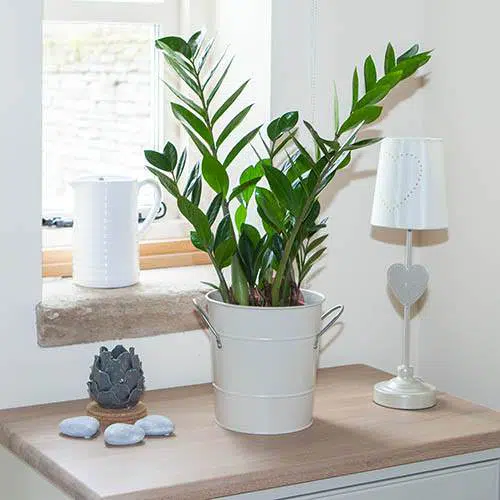
Regular ZZ plant is also another common variety in plant stores. Besides that, growing and caring for a regular ZZ plant is easy.
This ZZ plant has medium-dark green foliages and experiences a slow-growing rate. A juvenile regular ZZ plant has pale-bright green foliages that create a long-lasting impression.
The lance-shaped and dark green leaves bring a tropical feeling to any bland ambiance. I recommend placing the plant in a spot receiving bright indirect sunlight.
ZZ Dwarf Zenzi
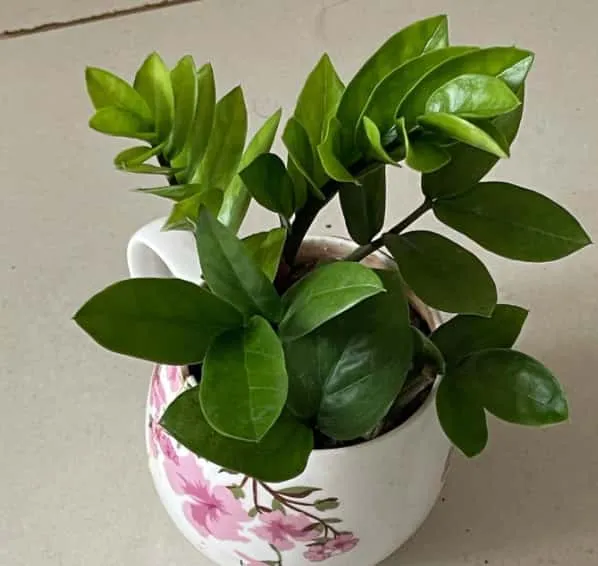
It belongs to the dwarf ZZ plant varieties and tends to be uncommon species. The dwarf zenzi has dark green foliages that are slightly curled.
The leaves are tightly grouped on the leaf stalk. The rachises (leaf stalks) are more robust to create a chunky-looking houseplant.
It grows up to a foot tall with similar care requirements to a regular ZZ plant. But this ZZ plant species requires less space compared to others.
Dwarf Zamicro ZZ Plant
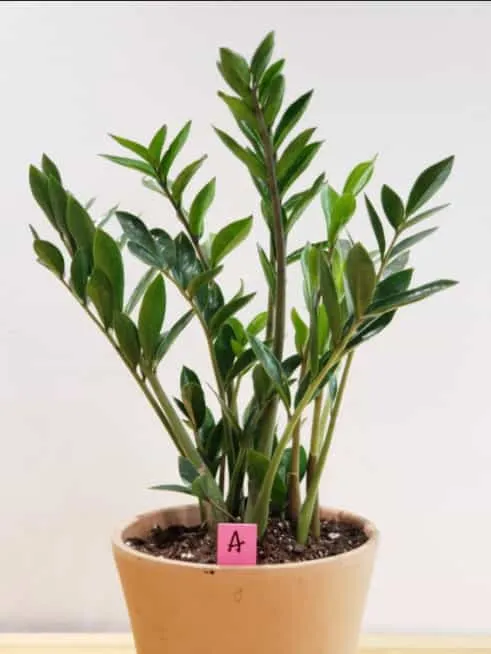
The dwarf Zamicro has some close similarities to the raven ZZ plant. But the Zamicro has dark green foliages and tends to be smaller.
The ZZ cultivar can grow up to 16 inches with flattish-small foliages. The leaflets are about half an inch wide each.
A juvenile dwarf Zamicro ZZ plant has bright green foliages. The compact shape with natural emerald green foliages creates a long-lasting impression.
ZZ Lucky Classic Plant
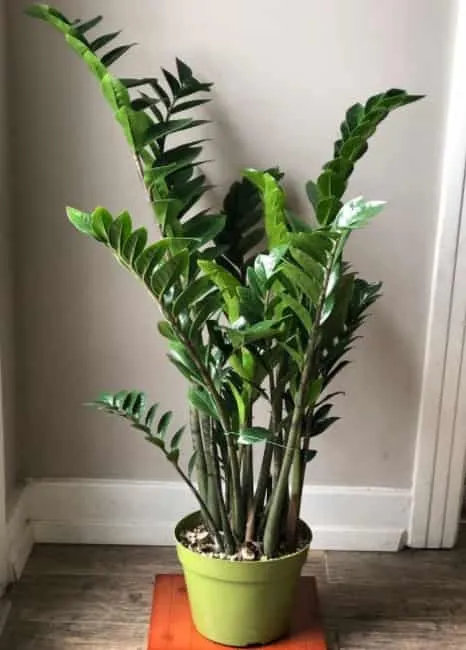
The lucky classic ZZ plant has some slight differences between ZZ lucky giant and ZZ lucky white plants. The species can reach 4-5 feet high with its robust stems.
ZZ lucky classic plant has medium-dark green foliages. The round foliages make the species unique compared to their counterparts.
Besides that, the ZZ lucky classic plant foliages are narrower and larger than other ZZ plant varieties. It is an ideal plant for corridors receiving bright indirect sunlight.
ZZ Whipped Cream
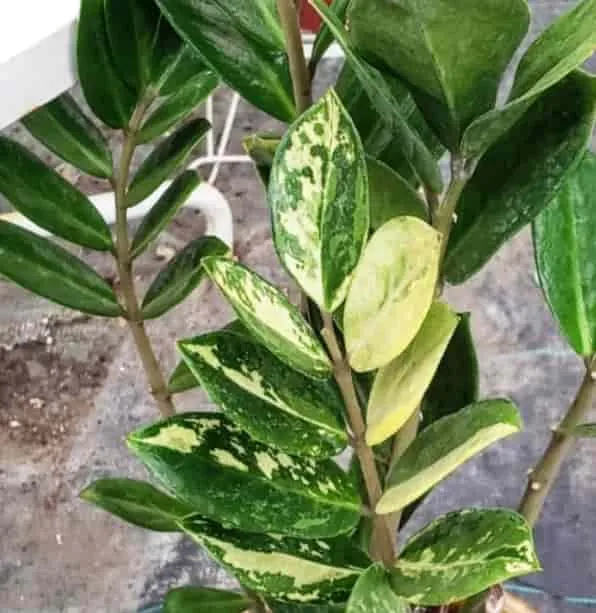
The ZZ whipped cream is among the rarest ZZ plant varieties. It has herbaceous stems that grow up to 2-5 feet tall.
The ZZ plant species thrive well under bright indirect sunlight. Direct sunlight will scorch the leaves and make stems fall over.
The white and light green foliages make this houseplant worth it. Stem cuttings are the ideal method for propagating the ZZ whipped cream species.
ZZ Bitkisi Species
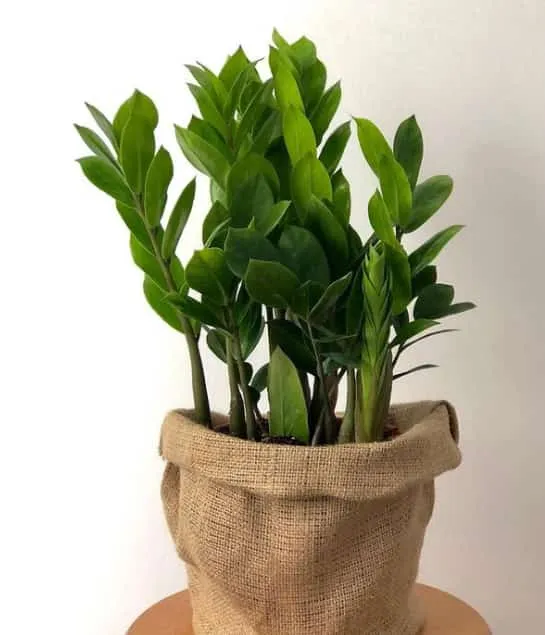
Zamia Bitkisi is a Turkish name that means plant. The ZZ plant species has slightly elongated stems that grow up to 30 inches.
The species can thrive and adapt in any room without problems. The fleshy stems store water to keep vital cells robust and turgid.
Juvenile zamia bitkisi has light green foliages that turn dark green at maturity. Growing and caring for zamia bitkisi is super easy.
ZZ Supernova
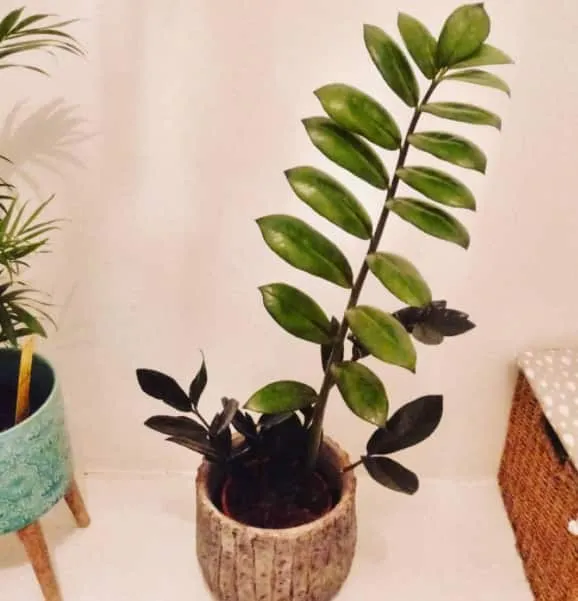
The ZZ species is a sibling to raven counterpart. The ZZ supernova hails from Africa and is also called ZZ raven purple-black.
It is a slow-growing species and can reach 30 inches tall after many years. The stems have water storage sacs, and the foliages are dark purple.
Some cultivars have reddish-black strips. But most supernovas have oblong leaves with leaflets well-arranged on the stems.
ZZ Akebono
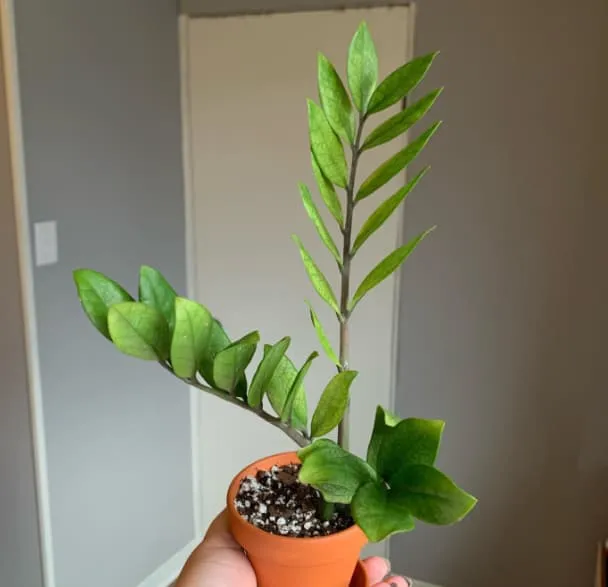
It is another rare ZZ plant variety with a Japanese name. Akebono means the color the sky possesses at dawn. It is an herbaceous perennial plant and can reach 3-4 feet high.
ZZ Akebono species originates from East Africa. The fleshy leaves store water and supply it to the plant when the water source is inadequate.
The Akebono has different foliage colors such as white, cream, pale, and yellow. The leaves are mottled with creased edges. They have smooth leaf surfaces.
ZZ Lucky White
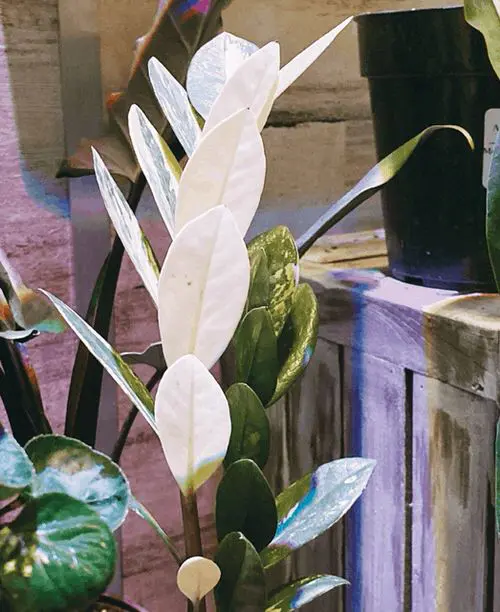
ZZ lucky white is a variegated species of ZZ plants. The plant coloration creates a striking outlook when grown in an eye-catching environment.
The houseplant can reach 4-6 feet high and belongs to the herbaceous succulent plants. The stems are elongated with a rhizome underneath.
This lucky white species has gentle green colors with a whitish structure. It also has round leaves that are less pointed.
How to Care for ZZ Plants
ZZ Plant Light Requirements
ZZ plants thrive under medium to bright indirect sunlight. These houseplants can also tolerate artificial lighting. Avoid direct sunlight exposure to prevent scorching leaves and stem falling over.
ZZ Plant Water Requirements
ZZ plants prefer slightly moist potting soil to stay healthy and happy. Too much water will cause root rot and kill the houseplant. I recommend watering the plant once every 2-4 weeks during spring and summer. Reduce watering frequency during the winter and fall season.
Humidity and Temperature Requirements
ZZ plants can tolerate under the indoor humidity level. 40-50% humidity is ideal for growing indoor ZZ plants. Maintain an indoor temperature range of 65-80oF (18-26oC). Keep the ZZ plant away from cold and hot drafts.
ZZ Plant Fertilizer Requirements
ZZ plants experience a slow-growing rate compared to other tropical plants. Feeding the plant every spring and summer will help speed up the growth rate. Use slow-release fertilizer or homemade fertilizer for houseplants.
ZZ Plant Soil Requirements
The houseplant thrives in fertile and well-draining potting soil. Aerated soil ensures free air circulation around the root systems. It also helps to avoid overwatering and root rot conditions.
ZZ Plant Propagation
ZZ plant is a rare houseplant that can be propagated from leaves and stem cuttings. I recommend propagating the houseplant during the spring season.
ZZ Plant Re-Potting Requirements
ZZ plant experiences a slow growth rate and rarely experience root-bound issues. Re-potting is essential to replenish the potting mix and nourish the plant. Re-pot the ZZ plants during the spring season and not winter.
Pruning and Maintenance
Clean the ZZ plant foliages every week to remove the dust by dipping a lint-free cloth in lukewarm water and wiping the leaves. Snip the old foliages and remove spurts with a sterilized blade. The process helps to maintain a compact shape and outstanding appearance.
Frequently Asked Questions
Is ZZ Plant Safe for Cats, Dogs, and Humans?
No. The plant foliages are rich in calcium oxalate minerals. These compounds are toxic to pets and humans if ingested.
Which Is the Rarest ZZ Plant Variety?
ZZ Akebono species is the rarest variety of ZZ plants. But the tissue culture technology facilitates more production to meet the rising demand.
What Is the Most Beautiful ZZ Plant Variety?
The ZZ raven species is the most beautiful ZZ plant variety. But all the ZZ plant varieties are equally gorgeous though it depends on human psychology.
What Is the Most Expensive ZZ Plant Variety?
Raven ZZ plant species is the most expensive due to its gorgeous appearance. But there are some online plant stores offering them at discount.
Final Thoughts
ZZ plant is a small group of the tropical houseplant. It is why there are a few ZZ plant varieties in the world. There are about 11-15 ZZ plant species at the moment due to tissue culture technology.
Growing and caring for a ZZ plant is easier than other houseplants. I hope my tips for growing and caring for ZZ plants were helpful.
